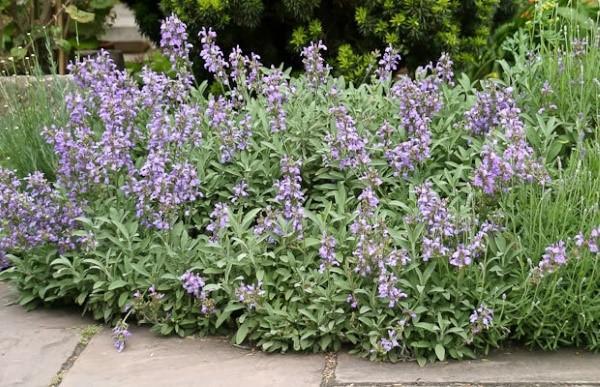Caring for sage in the garden: how to get a good harvest of medicinal raw materials
 Sage is a perennial plant known for its medicinal properties. To always have this magical herb at hand, you should know what care for sage should be. In nature, it grows on its own and generally feels good. But over time, the bush grows strongly, its leaves become smaller, and flowering becomes scarce. In addition, pathogenic fungi begin to develop in the thickened crown. Timely care will help to avoid this and get a harvest of healing leaves from your favorite plants for many years. A properly selected planting site will ensure the active development and lush blooming of sage.
Sage is a perennial plant known for its medicinal properties. To always have this magical herb at hand, you should know what care for sage should be. In nature, it grows on its own and generally feels good. But over time, the bush grows strongly, its leaves become smaller, and flowering becomes scarce. In addition, pathogenic fungi begin to develop in the thickened crown. Timely care will help to avoid this and get a harvest of healing leaves from your favorite plants for many years. A properly selected planting site will ensure the active development and lush blooming of sage.
Where to plant sage
Healing sage does not tolerate even a hint of shadow. With a lack of lighting, the bush begins to stretch, fall apart and eventually dies. It is necessary to grow a plant in the sunniest flowerbed. Then you will have a lush dense curtain. Sage also loves fresh air, so remote garden corners are certainly not for him.
Sage can grow in one place for 4-5 years. Older specimens are best transplanted to a new site. This is a great opportunity to divide a huge overgrown bush and get new plants.
Sage care
It's not enough just to plant sage in the sun and then forget about it. Young plants require special attention, but one should not forget about old-timers.
In order for the medicinal herb to actively grow new shoots and give a good harvest, it is necessary to carry out the following procedures:
- Regular watering, especially of young sage. From a lack of moisture, the leaves become coarse and lose their juiciness.
- After each watering, loosen the soil around the bushes, but be careful not to damage the roots.
- Clean up in a timely manner weeds, otherwise they will drown out the medicinal bed, which will reduce the yield.
- Prune the bush every spring. The older the plant, the more it needs to be trimmed. Pruning stimulates the emergence of new twigs and young large leaves. After all, it is the leaves that are cut for the preparation of medicinal decoctions and use in cooking. At the same time, radically, on a stump, it is not worth cutting the whole bush - the sage does not like this. After such a haircut, he departs for a very long and difficult time. It is enough just to remove 1/3 of the length of the branches, thus giving a push for branching. And in the fall, after harvesting, you need to cut off the remaining inflorescences so that they do not take away strength before wintering.
- Apply top dressing twice a season: in the spring - nitrogen fertilizers, and in the fall - potassium-phosphorus fertilizers.
Sage propagates by seeds, layering and dividing the bush. The latter method is especially popular among gardeners. Having sown the seeds for the first time, in subsequent years the lush bushes are simply divided.
As you can see, caring for sage will not cause much trouble. Visiting once a week on a medicinal bed with a watering can and a hoe, you will receive a year's supply of medicinal raw materials. And timely feeding, cutting and transplanting sage will help keep it in the garden for many years.